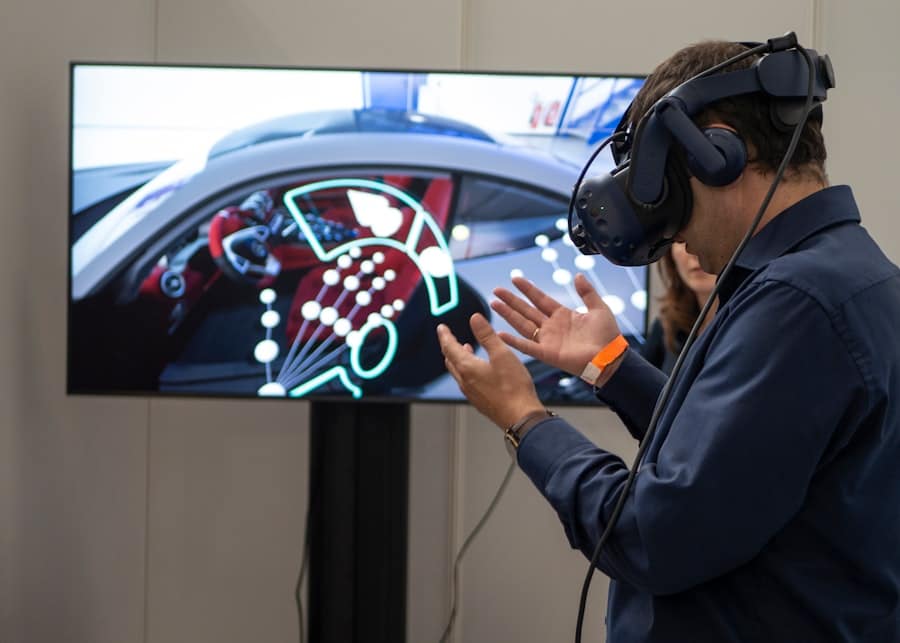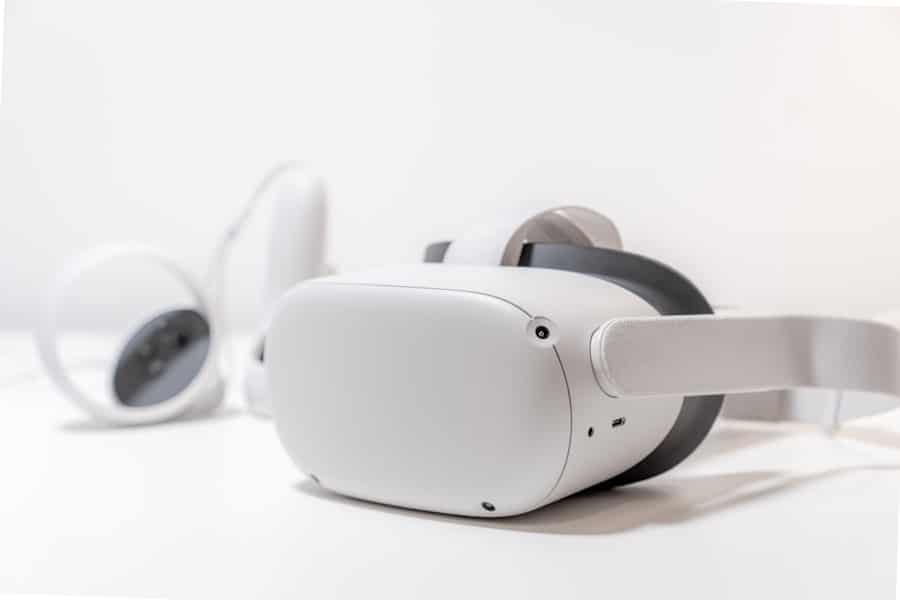Virtual Reality (VR) has emerged as a transformative technology across various sectors, and its application in sports performance analysis is particularly noteworthy. By immersing athletes in simulated environments, VR allows for a unique blend of training and analysis that was previously unattainable. This technology enables coaches and athletes to visualize performance metrics in real-time, providing insights that can lead to improved training regimens and enhanced competitive performance.
The integration of VR into sports is not merely a trend; it represents a paradigm shift in how athletes prepare for competition, analyze their skills, and recover from injuries. The evolution of VR technology has been rapid, with advancements in hardware and software making it more accessible and effective for sports applications. High-definition displays, motion tracking, and haptic feedback systems have all contributed to creating immersive experiences that can replicate real-world scenarios.
As a result, athletes can engage in realistic simulations that mimic the conditions they will face during actual competitions. This level of engagement not only aids in skill development but also fosters a deeper understanding of tactical decision-making and situational awareness, which are critical components of athletic success.
Key Takeaways
- VR technology is revolutionizing sports performance analysis by providing immersive and interactive experiences for athletes and coaches.
- VR has a significant impact on athlete training and development, offering realistic simulations and scenarios to enhance skills and decision-making abilities.
- VR plays a crucial role in enhancing real-time data analysis for athletes, providing valuable insights and feedback for immediate improvement.
- VR technology is being used in injury prevention and rehabilitation for athletes, offering safe and controlled environments for recovery and training.
- VR is utilized in mental and cognitive training for athletes, helping them improve focus, concentration, and decision-making under pressure.
The Impact of VR on Athlete Training and Development
Dynamic Training Environments
Traditional training methods often rely on repetitive drills and physical practice, which can lead to plateaus in performance. In contrast, VR provides a dynamic environment where athletes can practice specific skills or scenarios repeatedly without the physical strain associated with conventional training. For example, a basketball player can practice shooting from various angles and distances in a virtual gym, receiving immediate feedback on their technique and accuracy.
Data-Driven Analysis and Improvement
VR also facilitates the analysis of biomechanics in a way that was previously limited to laboratory settings. By using motion capture technology within VR environments, coaches can assess an athlete’s movements in real-time, identifying areas for improvement. This data-driven approach allows for targeted interventions that can enhance performance while minimizing the risk of injury.
Targeted Interventions and Improved Performance
For instance, a soccer player can analyze their kicking technique through VR simulations that highlight the mechanics of their foot placement and body posture, leading to more effective training sessions. By using VR to identify and address specific areas for improvement, athletes can optimize their training and achieve better results.
The Role of VR in Enhancing Real-Time Data Analysis for Athletes
Real-time data analysis is crucial in modern sports, where split-second decisions can determine the outcome of a game. VR technology enhances this aspect by integrating data analytics into immersive training sessions. Athletes can engage in drills while simultaneously receiving feedback on their performance metrics, such as speed, accuracy, and reaction time.
This immediate feedback loop allows athletes to make adjustments on the fly, reinforcing learning and skill acquisition. For example, in sports like tennis or golf, VR systems can track an athlete’s swing mechanics while providing instant visual feedback on their form. This capability not only helps athletes correct mistakes but also enables them to experiment with different techniques in a risk-free environment.
Coaches can utilize this data to create customized training plans that address specific weaknesses or capitalize on strengths, ultimately leading to more effective preparation for competitions.
VR Technology in Injury Prevention and Rehabilitation for Athletes
Injury prevention is a critical concern for athletes at all levels, and VR technology plays a significant role in addressing this issue. By simulating game scenarios and training environments, athletes can practice movements that mimic those they will encounter during competition without the associated physical risks. This controlled setting allows for the identification of potential injury risks before they manifest in real-world situations.
Furthermore, VR is increasingly being used in rehabilitation programs for injured athletes. Traditional rehabilitation often involves repetitive exercises that can be monotonous and demotivating. In contrast, VR can transform these sessions into engaging experiences that simulate real-life activities.
For instance, an athlete recovering from a knee injury might use VR to navigate through a virtual obstacle course that mimics the movements required in their sport. This not only aids physical recovery but also helps rebuild confidence as they gradually return to full activity.
The Use of VR in Mental and Cognitive Training for Athletes
Mental resilience and cognitive acuity are essential components of athletic performance, and VR offers innovative solutions for enhancing these aspects. Through immersive simulations, athletes can practice visualization techniques that improve focus and concentration under pressure. For example, a football quarterback might use VR to simulate high-stakes game situations where they must make quick decisions while under duress.
This type of mental rehearsal can significantly enhance an athlete’s ability to perform when it matters most.
By placing them in complex scenarios where they must analyze opponents’ movements and make tactical decisions, athletes develop critical cognitive skills that translate directly to their performance on the field or court.
This cognitive training complements physical practice, creating well-rounded athletes who are prepared for the multifaceted challenges of competitive sports.
Case Studies of Successful Implementation of VR in Sports Performance Analysis
Several sports organizations have successfully integrated VR technology into their training programs, showcasing its effectiveness in enhancing performance analysis. One notable example is the use of VR by the NFL’s New England Patriots. The team employs a VR system called STRIVR that allows players to immerse themselves in game scenarios during practice sessions.
This technology has been credited with improving players’ understanding of playbooks and enhancing their ability to read defenses before the snap.
The Sacramento Kings have adopted VR technology to analyze player performance during games.
By using VR simulations to review game footage, players can gain insights into their decision-making processes and identify areas for improvement. This innovative approach has led to more informed training sessions and has contributed to the overall development of the team’s players.
The Future of VR in Sports Performance Analysis
The future of VR in sports performance analysis is promising, with ongoing advancements in technology poised to further enhance its applications. As hardware becomes more sophisticated and affordable, we can expect wider adoption across various sports disciplines. Innovations such as augmented reality (AR) may also complement VR by providing real-time overlays of performance data during live training sessions or competitions.
Moreover, the integration of artificial intelligence (AI) with VR systems could revolutionize how data is analyzed and utilized. AI algorithms could process vast amounts of performance data to identify patterns and trends that human coaches might overlook. This synergy between AI and VR could lead to even more personalized training regimens tailored to each athlete’s unique needs and capabilities.
The Potential of VR to Revolutionize Athlete Performance Analysis
The potential of VR technology to revolutionize athlete performance analysis is immense. By providing immersive training experiences that enhance skill development, real-time data analysis, injury prevention, mental training, and rehabilitation, VR stands at the forefront of modern sports science. As this technology continues to evolve, it will undoubtedly play an increasingly vital role in shaping the future of athletic training and performance analysis.
The integration of VR into sports not only enhances individual athlete performance but also contributes to the overall advancement of coaching methodologies and team strategies. As more organizations recognize the benefits of this innovative approach, we can anticipate a new era in sports where data-driven insights and immersive experiences become standard practice for athletes striving for excellence on the field or court.
A related article to How VR Is Supporting Athletes in Data-Driven Performance Analysis is a review of the latest smartwatches from Huawei. These smartwatches offer advanced features that can track athletes’ performance metrics in real-time, providing valuable data for analysis and improvement. To learn more about the top smartwatches for athletes, check out this article.
FAQs
What is VR?
VR stands for virtual reality, which is a computer-generated simulation of an environment that can be interacted with in a seemingly real or physical way by a person using special electronic equipment, such as a helmet with a screen inside or gloves fitted with sensors.
How is VR supporting athletes in data-driven performance analysis?
VR is being used to provide athletes with immersive experiences that allow them to analyze their performance in real-time. This technology can track and measure various metrics such as speed, agility, and reaction time, providing valuable data for athletes and coaches to improve training and performance.
What are the benefits of using VR for athletes?
Using VR for data-driven performance analysis allows athletes to receive immediate feedback on their performance, identify areas for improvement, and make adjustments to their training regimen. It also provides a more engaging and interactive way to analyze and understand their performance compared to traditional methods.
How is VR technology integrated into sports training and performance analysis?
VR technology is integrated into sports training and performance analysis through the use of specialized equipment such as VR headsets, motion sensors, and data tracking software. These tools allow athletes to immerse themselves in virtual environments that simulate real game scenarios and provide detailed performance data for analysis.
What sports are currently using VR for data-driven performance analysis?
A wide range of sports are currently using VR for data-driven performance analysis, including football, basketball, soccer, baseball, and more. The technology is being adopted by professional teams as well as individual athletes looking to gain a competitive edge through advanced performance analysis.



